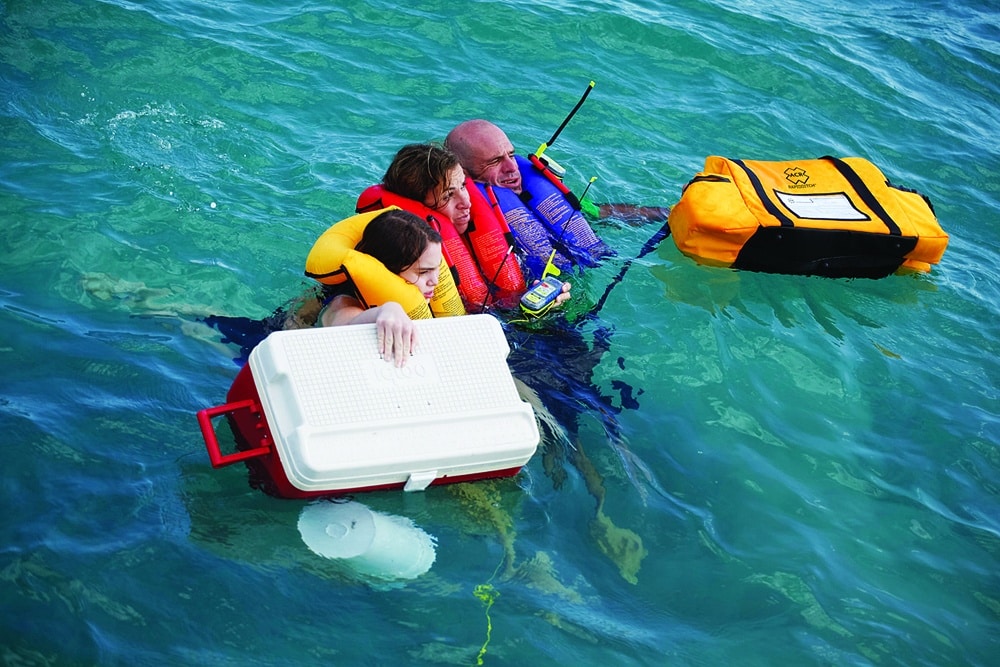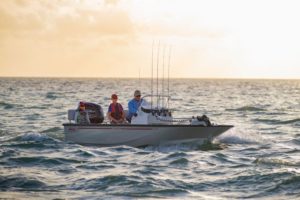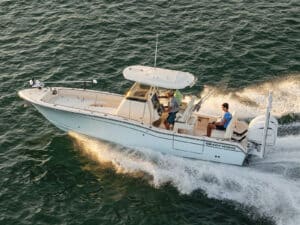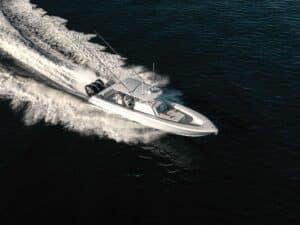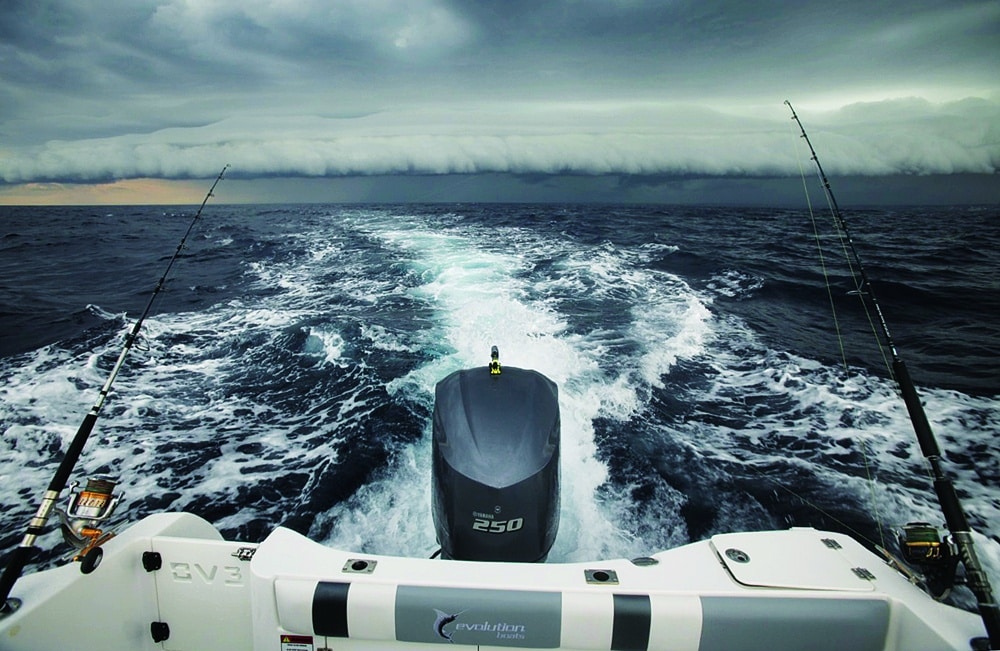
There’s a saying: “Hope for the best, but prepare for the worst.” Nowhere is this more apropos than when you’re fishing on a boat. Prudent seamanship and respect for weather and water, combined with a craft that’s seaworthy and well maintained, represent key safety factors in fishing afloat.
Having the right safety gear also ranks high, but just as important is the ability to access all of the equipment in a hurry. When a boating situation turns bad, it often does so with surprising speed, be it swamping, sinking, fire or hard grounding in heavy seas. That is why astute captains pre-assemble a ditch bag (aka abandon-ship bag) with their emergency supplies — such as a VHF radio, lights and a signaling beacon — all in one place. If the time ever comes to abandon ship, the last thing you need to worry about is collecting what to take with you.
Build Your Ditch Bag Right
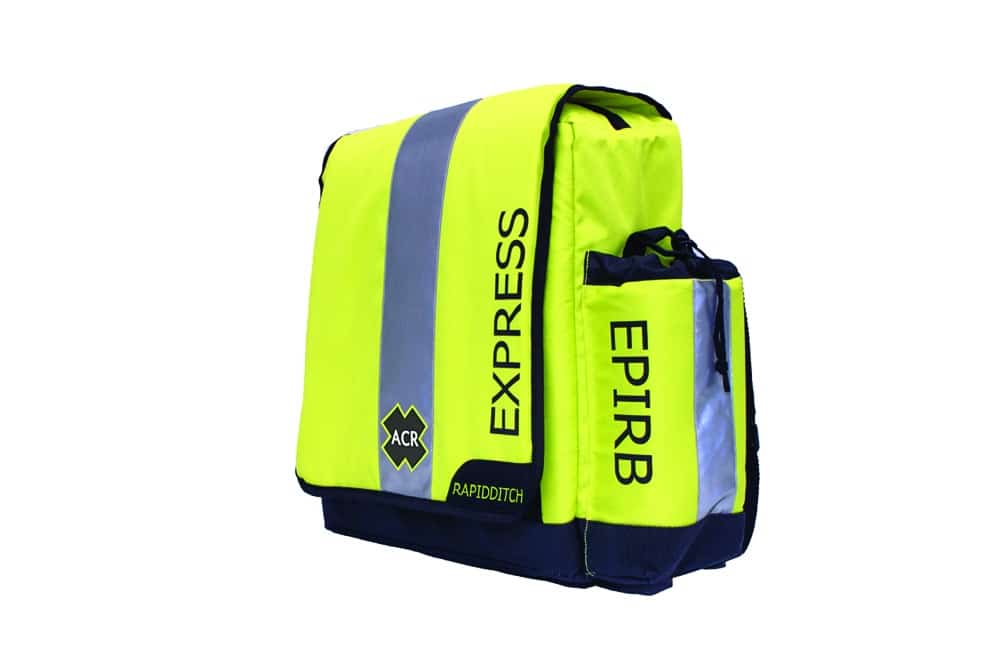
Purpose-built ditch bags from companies such as ACR and UST Marine offer major advantages in emergency situations. For example, the RapidDitch bag and the smaller RapidDitch Express bag from ACR offer built-in buoyancy. They float even when full of equipment — a distinct advantage in an abandon-ship situation.
These survival bags are constructed with rugged, water-resistant, yellow high-visibility material and feature a large reflective stripe to help improve the chances that rescuers can locate you.
“These bags also have a tethering system,” says Nichole Kalil, public-relations and media manager for ACR. “The shoulder strap unhooks and becomes a pair of 4-foot safety harnesses to clip to your life jackets to keep everyone together while in the water.” The tether also keeps the ditch bag from drifting away.
Purpose-built ditch bags have dedicated storage pockets, often with bold labeling to minimize rummaging with numb or shaky hands while accessing gear in an emergency.
Avoid stashing the ditch bag in a dank locker. It should be immediately accessible in an emergency, even if it gets in the way once in a while.
Essential Ditch-Bag Item: Waterproof Hand-Held VHF Radio

Waterproof Hand-Held VHF radios such as the Icom M93D or Standard Horizon’s new HX870 are not only waterproof, but they also float. They have a built-in GPS, allowing you to transmit a DSC distress call with your position to rescue agencies and nearby vessels. You can also voice-broadcast a mayday. Pack extra batteries too.
Essential Ditch-Bag Item: Strobe
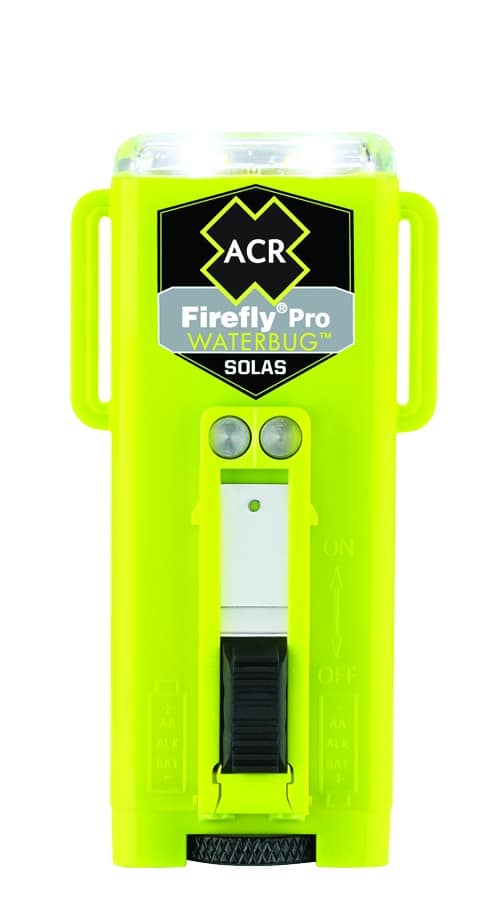
Make sure a you include flashing strobes such as the ACR Firefly Pro Waterbug, which activates with water contact and help rescuers pinpoint individuals, especially at night. Attach one to each life jacket. Also include in your ditch bag a marine floating flashlight such as the ACR 1916 Firefly Plus Strobe Flashlight Combo, which provides a source of illumination for you and the crew at night.
Essential Ditch-Bag Item: EPIRB
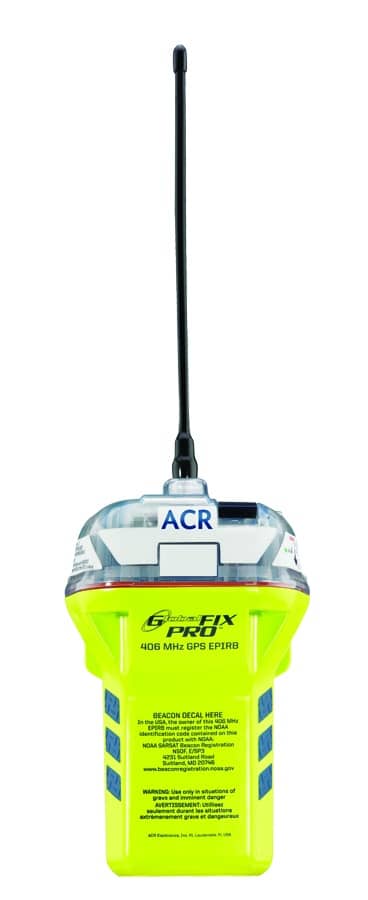
Include in your ditch bag a manually activated Cat II Emergency Position Indicating Radio Beacon (EPIRB) such as the ACR Global Fix Pro, which uplinks to an NOAA satellite to alert rescue agencies to your position. Place this in a pocket on the outside of the bag so the antenna has a clear view of the sky.
Essential Ditch-Bag Item: Personal Locator Beacon (PLB)
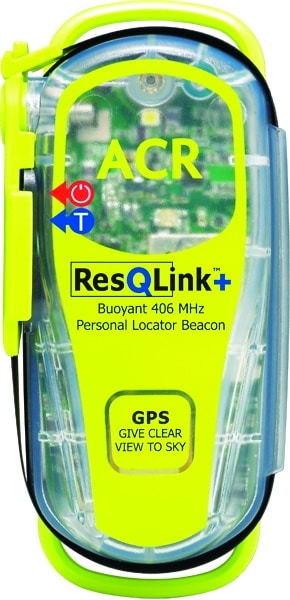
A floating Personal Locator Beacon (PLB) such as the ACR ResQLink+ is designed to broadcast the position of individuals, so one should be attached to each life jacket. Also include in your ditch bag a generous number of U.S. Coast Guard-approved signal flares. These are also required equipment for your vessel. Put a set in your ditch bag to alert nearby mariners to your emergency. Exercise caution when using flare guns or meteor flares. With hand-held flares, be careful that slag doesn’t drip on a life raft, causing it to lose buoyancy.
Additional Essential Safety Items
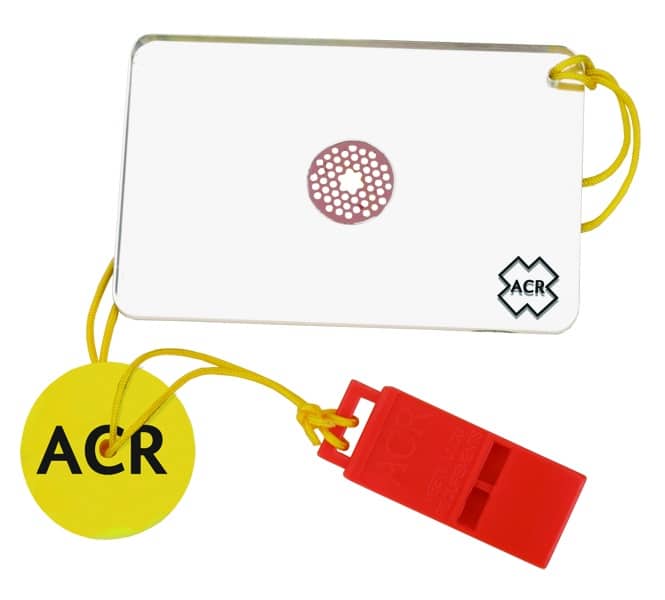
Additional items in your ditch bag should include a signal mirror such as the ACR Hot Shot signal mirror or a similar product to alert distant vessels to your position during the day.
Other items to include in your ditch bag:
- Whistles: A sound-producing device such as the Seachoice Jet Scream ($4.29) whistle helps attract rescue personnel when visibility is poor. Attach one to each life jacket.
- Rope: Twenty feet of 3/8‑inch floating poly line helps keep the crew together if there’s no life raft.
- First-Aid Kit: Make sure it includes essential prescriptions, as well as sunscreen and seasick medications.
- Folding Knife: A blunt-point serrated knife is less likely to puncture a life raft, but will cut lines and bandages if necessary. Surgical scissors can do the same.
- Drinking Water: The farther offshore you venture, the longer you are likely to wait for rescue. Provision your ditch bag accordingly.
- Energy Bars: Not many foods feature the shelf life or proportionate calories of energy bars. As with water, provision accordingly.
- Cash: This and copy of your passport in a waterproof bag may help get you back in the United States from foreign waters.
What About Lifejackets?
